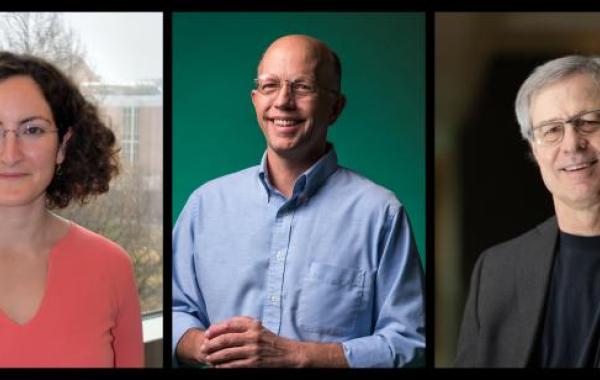Unselfish Molecules May Have Given Rise to Life

It’s a question older than science: How did life begin? In modern biology, life depends on life to live. But how did the mutualistic relationship between different molecules – which led, eventually, to complex biological systems, like human beings, for example – actually come to be?
For many researchers, the answer lies within the ‘RNA World,’ a widely-accepted hypothesis in which self-replicating RNA proliferated, serving a dual role as both genetic polymer and catalytic polymer, long before the evolution of DNA and protein.
The RNA World model is an attractive cradle-of-life premise, according to Georgia Institute of Technology researcher Moran Frenkel-Pinter, “because it avoids the extreme improbability of simultaneous independent origins of two different types of polymers. According to that theory, over time the RNA World incrementally invented the ribosome, giving rise to the current biological system comprised of RNA, DNA, and protein.”
She adds, “it’s kind of a parsimonious idea, basically saying that RNA made everything. But there is a much simpler solution.” Frenkel-Pinter and her research partners have offered an alternative – the concerted evolution of polymers – of nucleic acids and proteins. “A Ribonucleoprotein World,” quips Frenkel-Pinter, a research scientist and former NASA Postdoctoral Fellow who works in the labs of Nick Hud and Loren Williams at Georgia Tech, and is the lead author of a recently published paper that provides experimental support for this model.
The paper, “Mutually stabilizing interactions between proto-peptides and RNA,” in the journal Nature Communications, describes the chemical linkage that could have been at play during the origins of biopolymers. Their results suggest that neither nucleic acids or proteins came first, but that RNA and proteins were selected together through a process of co-evolution. In other words, it wasn’t a single selfish gene competing for survival that drove evolution; it was the rising tide of collaboration between molecules from the very beginning.
“People have wondered, ‘was it protein first, was it nucleic acid first?’ This work says is, they were connected from early on,” says co-author Hud, regents professor in the School of Chemistry and Biochemistry, director of the NSF/NASA Center for Chemical Evolution, and associate director of the Petit Institute for Bioengineering and Bioscience.
So, there was more interdependence than independence underlying the machinery of early life. Or as co-author and Petit Institute researcher Williams puts it, “it isn’t really an independent dog eat dog world. You have systems working together – birds that eat the bugs off zebras, microbes in our gut, plants that make the oxygen we breathe.”
The researchers hypothesized that positively-charged (cationic) proto-peptides might functionally interact with nucleic acids, and then experimentally prove it. The cationic proto-peptides (either produced as mixtures from plausibly prebiotic dry-down reactions or synthetically prepared) directly interact with RNA, resulting in mutual stabilization: The proto-peptides significantly increase the thermal stability of folded RNA structures, and in turn, RNA increases the lifetime of the proto-peptide.
“There are all kinds of mutualistic relationships in biology, and we’re saying that maybe molecules work this way, too – the origin of life was matter of molecules working together,” says Williams, professor in the School of Chemistry and Biochemistry and director of the NASA Center for the Origin of Life at Tech.
Ultimately, the research team determined that collaborative molecules are the molecules that survived.
“It’s like the difference between a jungle and a cornfield,” says Williams. “The RNA World model is kind of like a cornfield in Ohio. Under certain circumstances, it works well – for example, Ohio grows a lot of corn. We’re looking at the origin of life like it was a jungle – a jungle of molecules interacting, working together for mutual benefit.”
In addition to Frenkel-Pinter, Hud, and Williams, the other authors were: Jay Haynes (graduate researcher in Williams lab); Ahmad Mohyeldin (graduate researcher in Williams lab), Martin C (graduate researcher in Hud lab), Alyssa Sargon (undergraduate researcher in Hud lab), Anton Petrov (research scientist, School of Chemistry and Biochemistry), Ramanarayanan Krishnamurthy (associate professor, Scripps Research Institute), Luke Leman (assistant professor, Scripps Research Institute). The work was supported by the NSF and NASA Astrobiology Program under the Center for Chemical Evolution (based at Georgia Tech).
